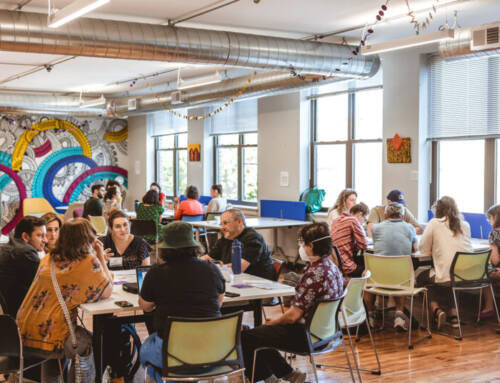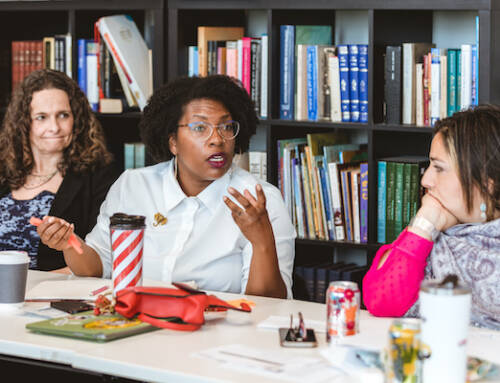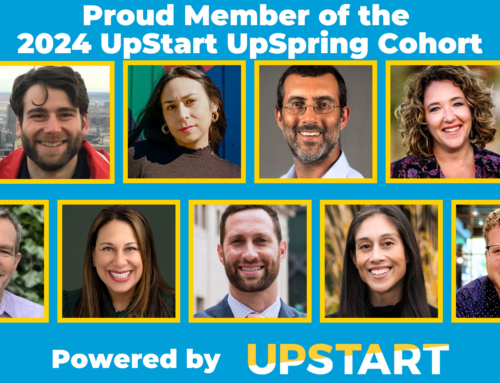At the core of leadership is the ability to assess a situation, name its challenges, imagine new possibilities, and attempt to implement those imagined new paths. It is necessary for those who care about the future of the Jewish community to apply this approach to our own educational systems. What is and isn’t working in our spaces of Jewish education? How can we educate today’s Jewish children to be excited about Judaism, nourished by it, and use its teachings to contribute meaningfully to society?
There has been much recent debate about the best ways to achieve a Jewish day school’s vision: to instill a grounding in Jewish values and a deep sense of Jewish identity, a love of learning and a rigorous overall education, and the imperative to make a positive, mending impact on the world. In addition to teaching content and skills, we need to better explore the pedagogic tools to inspire life-long learning, flexibility, creativity, and engagement.
Design Thinking, developed by Rolf Faste and David Kelley from Stanford University, uses the human-centered approach of designers to solve problems in business, social, and educational sectors. This method is invaluable in achieving the paradigm-shift Dr. Jonathan Woocher claims is critical for the success of Jewish education, in which we “put learners at the center of our thinking and practice, and not just as the consumers of what we offer” (RJ.org, Reinventing Jewish Education, August 15, 2011).
The Design Thinking process has three phases that can be used both to solve meta-challenges facing schools and also as a tool in the classroom. In the inspiration phase, students, teachers, or administrators interview those affected by a particular problem. Interviewing leads to the development of empathy. Putting oneself in the emotional and experiential space of another is critical in framing a genuine challenge. Participants develop interview skills, learn how to ask probing questions, and develop compassion for others. After a close reading of the interview data and additional research into the issues that emerge, the group pools the information and crafts a problem statement to define the core challenge.
In the ideation phase, the group comes up with potential solutions to the problem. This phase involves teaching and learning about creativity, pushing boundaries, allowing for many perspectives, and valuing the ideas of others. It births unexpected and innovative solutions to the well-defined problem as participants come up with as many ideas as they can; the most inspired bubble to the top.
The final phase of the process is implementation. This involves prototyping, where participants choose one or two of their many proposed ideas, design them, and present them to the original interviewees. The feedback allows them to test ideas until they reach a meaningful solution.
“There is often the perception that 21st century skills are nice-to have additions to a facts-based core curriculum. On the contrary, these skills are essential in a world of ever-growing complexity. The beauty of Design Thinking is that it can be applied in very diverse ways to meet the needs and realities of different schools,” said Leticia Britos Cavagnaro, Co-Founder of Lime Design Associates, which brings Design Thinking tools into educational environments. “Design Thinking provides the tools to dig deep in the complexities of our reality, understanding the point of view of the different stakeholders, and fosters the creative confidence that we can reinvent our future, rooted in the core values that guide us.”
These tools can help administrators better define the challenge facing middle-class parents attempting to pay for multiple children to attend multiple years of day school education. They can help teachers better understand their students, their learning styles, and their interests. And they can help students feel more ownership of their learning as they frame the challenges and pose solutions in various subject areas.
I hope Jewish day schools will explore the Design Thinking method to help to frame probing, relevant questions, and creative, impactful solutions. We should focus our energies on creating educational environments that are exciting and collaborative, where teachers guide learning processes, and students help shape the direction of the learning. We should seek pedagogic methodologies that prepare students to be active participants in society and weave connections between their Jewish learning and their actions in the secular world. I envision a future where students bring curiosity, interpretive skills, desire, and courage to make an effective impact that is deeply embedded in core Jewish values.
Maya Bernstein, an author, is an associate at UpStart.
This article first appeared in Presentense Magazine.
Our purpose is to enable entrepreneurs to bring bold Jewish ideas to light. We help them reach Up to people in new ways that are meaningful, more inclusive, and create a brighter future for our Jewish community and the world we share.




